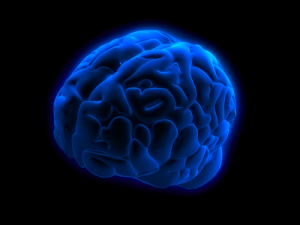Brain research now confirms that deep conceptual learning requires making mistakes, and that the more positive we feel about mistakes, the more we can learn. That’s because brain freeze, or what my sixth graders have started calling “blue brain” is real. Many of my students have such an aversion to making mistakes that instead of digging into new ideas, they become paralyzed, hoping not to make a miss-step instead of trying out new ways of thinking. I can see why. For sixth graders new to middle school the stakes are high: new friends, lockers (and combination locks), crowded, confusing hallways, five or six teachers, lunchroom rules, free time at lunch but no recess, PE and band lockers, binders, dividers and pencil pouches. It’s a lot to keep track of and they don’t want to miss out on anything or be the focus of negative attention. Some of them try so hard to get it all right that they have a hard time doing what they are at school for to begin with: learning.
This year, about one third of my students tell themselves they are bad a math if they make a mistake, and more than half feel negatively about math mistakes. If my students are going to grow to the greatest potential they need to break out of this mindset. They need to change their minds about mistakes and learn to see them as learning opportunities, even though the pressure they feel to succeed works to convince them of the opposite.
Luckily, in spite of all their efforts not to make a mistake, they are making mistakes anyway. And they don’t feel happy about it yet. Rather than forcing them to feel happy, in our class they have started to call the uh-oh feeling you get when you make a mistake ‘blue brain.’ They got the idea of blue brain from a short BBC clip that shows the stop in brain electrical activity following a mistake as blue, and then shows the powerful mistake-fixing activity that follows as red. The end of the video contains just fifteen seconds on the difference between positive and negative reactions to mistakes, but that was enough to support students to come up with the following list of things they could say to themselves to recover from blue brain more quickly.
- Try harder next time.
- Gosh I made a mistake, I’d better fix it.
- It’s okay everybody makes mistakes.
- I am learning.
- Try again.
- Keep going!
- I’m just getting smarter.
- Don’t feel bad, just fix it and move on.
- That is okay!
- Keep trying. You know you can do it.
- Mistakes make me smarter.
- I will get it next time.
- No one is perfect.
- I’m just learning a whole new way!
- That’s ok. It’s part of learning.
- Now you can learn from your mistake.
- So what? Just fix it.
- It’s not the end of the world.
- You can’t learn without making mistakes.
- Oh well, I will get another chance.
- You can bounce back.
- Let’s find a solution.
- Don’t worry.
- We can always try again.
As we enter the second full week of school, most of them aren’t yet happy to have the opportunity to fix mistakes, but at least they are beginning to have some tools and language to help themselves get back into the learning action as quickly as possible.
